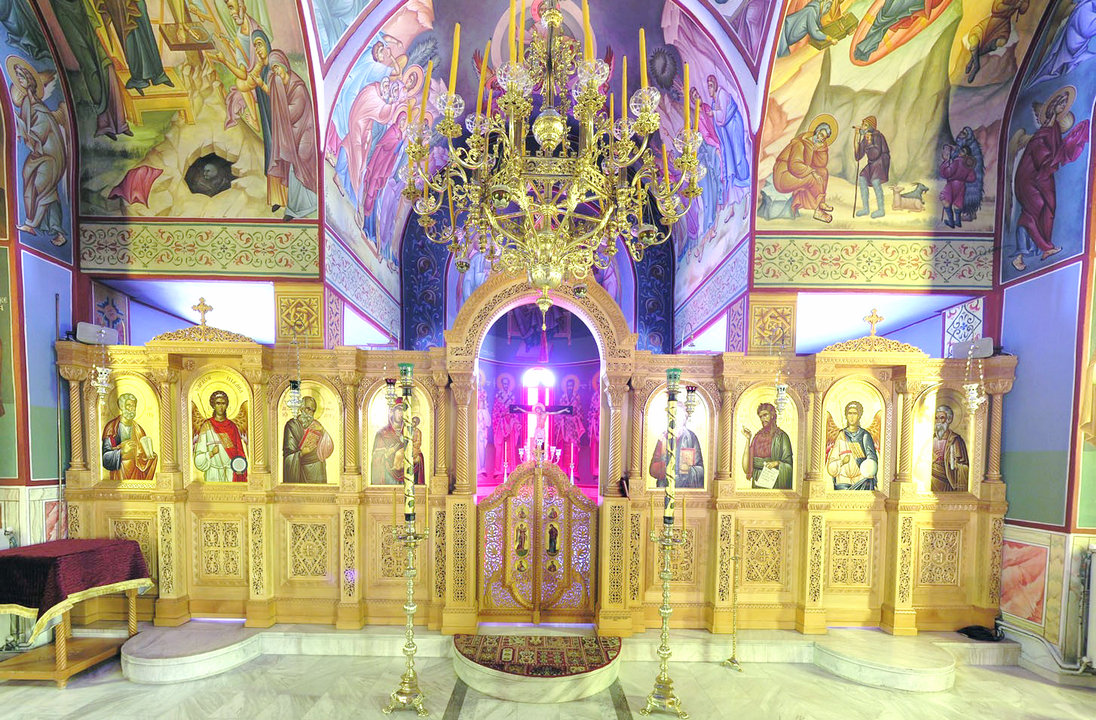Originally posted 2017-03-20 00:59:23.
The Monastery of Saint John the Theologian (also called Monastery of Saint John the Divine) is a Greek Orthodox monastery founded in 1088 in Chora on the island of Patmos. The Great Treasury of the Monastery of Saint John the Theologian is the greatest museum in the Aegean. Some of the most precious artefacts of the Byzantine and post-Byzantine period are exhibited in two wings.
The Holy, Royal, Patriarchal, Stavropegic and Coenobiac Monastery of St John the Theologian and Evangelist was founded in 1088, when Byzantine emperor Alexios I Komnenos granted the island of Patmos to Hosios Christodoulos. The Monastery was build in a heavily fortified style due to the threats of piracy and the Selçuk Turks and has been a place of pilgrimage and Greek Orthodox learning ever since. Throughout the centuries -almost a millenium- the Monastery’s course in history has been uninterrupted. The Patriarchal Exarchy of Patmos is directly under the jurisdiction of the Ecumenical Patriarchate and the island was pronounced Holy by the Revered Patriarchal and Synodic Act and by the law 1155/81 of the Greek state. The Monastery along with the Chora and the Cave of the Apocalypse are part of Unesco’s World Heritage List due to their outstanding universal value.
In 1088, Byzantine Emperor Alexios I Komnenos gave the island of Patmos to the soldier-priest John Christodoulos. The greater part of the monastery was completed by Christodoulos three years later. He heavily fortified the exterior because of the threats of piracy and Seljuk Turks.
330 manuscripts are housed in the library. The monastery has, amongst its relics, the skull of Saint Thomas the Apostle.
These include documents, manuscripts and incunabula, icons and ecclesiastical silver, vestments, wood carved ecclesiastical objects and furniture, jewels and votives, classical and early-christian antiquities, as well as representative items from the vast Ottoman and Slavic collections of documents and art. The proceeds from the symbolic entrance fee and the purchasing of souvenirs, copies and books from the Museum Shop contribute to the maintenance of the Museum and the Restoration Laboratories, in order to continue the tradition of the Monastic Brotherhood for the protection and the restoration of these treasures, which are deposited as votives by both famous and anonymous faithful, so that future generations may appreciate this great ecumenical culture and the legacy of Byzantium.
In the Revelation section of the New Testament is mentioned the island of Batnaz. Accordingly, John the Bible writer was sent to exile to the island of Batnaz in 95 AD during the reign of Emperor Domitian. Jesus was seen to himself when he was on the run. For this reason, the island is a pilgrimage center for Christians. Because of the fact that the New Testament is the only book allegedly foreseeing the future as much as the portions written by John, the Christian circles have been called Batnaz Island by the Mediterranean of Jerusalem. Claiming that he heard the voice of God in the cave, John again took the book, which was part of the New Testament which he said he wrote with this inspiration, mostly in the cave and sent it to the 7 churches.
Saint John the Monastery is also one of the few monasteries and churches dedicated to the island of John. After John’s death, early Christians built a great basilica in memory of where St. John the Monastery now resides.
In 1088, the Byzantine emperor Alexius I Komnenos gave the island of Batnaz to the priestly soldier John Christodoulos. The majority of today’s monastery is built by Christodoulos in the first three years. Since the pirates and the Anatolian Seljuk Turks were a threat, special attention was paid to making the façades sound. It is a structure that is very important for Orthodox people as a monastery with castle style and fortress duty with solid walls around 15 meters.
6th century. After the island is almost completely abandoned island 11th century. Has also gained a new life after the construction of St. John the Monastery.
There are 330 manuscripts in the manuscript’s library (267 on parchment), while 82 manuscripts of the New Testament are among them. Also the parts of the ritual are hid. [0034] The following are also included in the figures: 1160-1181, 1385-1389, 1899, 1901, 1966, 2001-2002, 2080-2081, 2297, 2464-2468, 2639, 2758, 2504, 2639.
